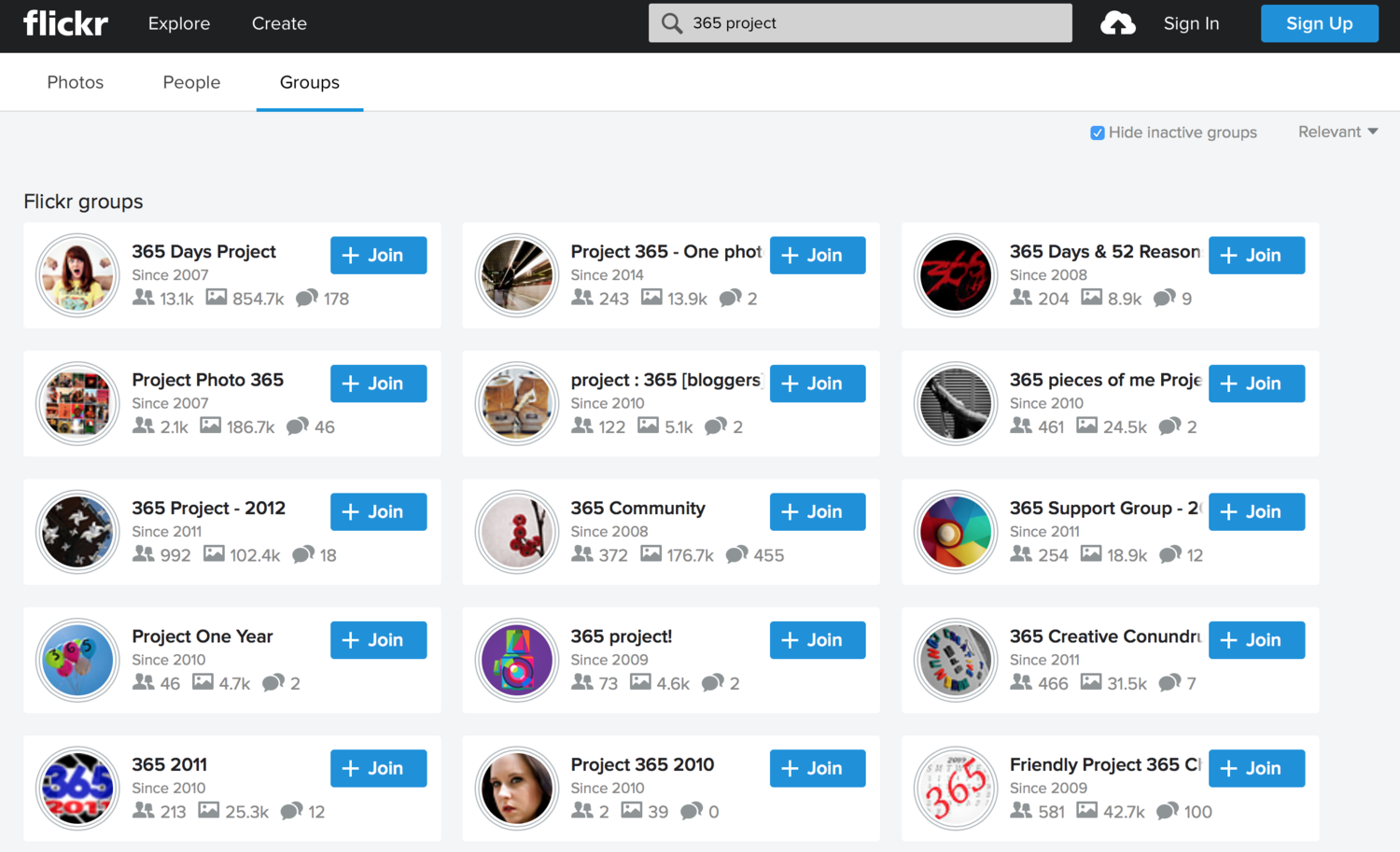January 1 is time for new beginnings, and the Blue Riband event for amateur photographers worldwide is the 365 Project. For the few of you who this doesn’t sound familiar, the name of the game is to try to post a picture a day without fail for a whole year. It has developed the skills and talents of many incredible photographers, but it’s not for everyone. Here are 10 things to consider before you decide to embark on your own 365 project.
1. Will a Picture-a-Week Project Be More Realistic for You?
While the 365 Project certainly stretches one's creativity, it may not be entirely feasible for you to find the time every day amongst your everyday life. This may sound silly as taking a picture can take just 1/5000 of a second, but committing to shooting something new, interesting, and self-satisfying every day takes effort. Many people instead embark on a "52 Project," which is one picture a week for a year. This may fit better into your lifestyle, and give you an entire week to develop logistics and a strategy to capturing that shot in your mind you’ve been pining over.
2. Just Because Lots of People Do It, Doesn’t Mean It’s Right for You
Make sure your motivations for doing a 365 Project are the right ones. Doing it to tick a box is certainly not one of them. There are many other ways to commit your time on a daily basis to improving your photography. Granted, actually shooting, editing, posting, and seeking feedback is an extremely potent way in becoming a better shooter. But the format of the 365 Project can muddle the desire to improve your creative process with ambitions of simply completing the task at hand to be “part of the club.”
3. Think About Your Goals - Is This the Best Way to Achieve That?
A 365 Project can satisfy creative goals while giving you an excuse to try out new techniques and genres in photography. Creating a routine in your day to set aside time for creative shooting can also help expand your understanding of photography. There is no doubt that a 365 Project can help improve your skills if approached correctly, but it can also get in the way of other goals, specifically if these goals are more business orientated. Free time is a limited commodity, and aspirations in getting your photography business off the ground must be prioritized. Flexing creative muscles is certainly a way of improving your service as a photographer, but make sure it is not at a detriment for longer term goals.
4. Enter Competitions Instead
Alternatively, start entering as many photography competitions as you can find over a period of a year. Not because you can win free stuff, but because it’s the taking part that counts. Having a brief from competition organizers can keep inspiration fresh all year round. Seeing how other photographers approach competition briefs is also a great way to inspire new ideas of your own. The EyeEm app and Photo Contest Insider are great places to start to find competitions.

5. Look for a Community to Keep You Motivated and Inspired
All things considered, if you decide to embark on this journey then don’t do it alone. There are many communities to inspire you, encourage you, and provide constructive feedback. Check out the dozens of groups on Flickr, or follow #365project on Instagram.

6. Think of an Angle
A popular angle to take is to stick to self-portraits; check out Sasha O’s incredible collection here. But this is certainly not the only way to go. How about a macro photography 365 Project? Or only using one dominant color in frame for each post? How about changing your own personal brief each month? By thinking of an angle you will help motivate yourself by narrowing your focus on a subject.

7. Be Prepared for Photography to Become a Burden at Times
There were many times on my own personal quest that it escaped my mind until I was brushing my teeth late at night. But once you’ve started, keeping the streak becomes an obsession. So off you go, hunting around your house to get that shot before you go to sleep. There was no value in whether I got that shot or not, and the project turned into a bit of a pain. At this point I stopped, 286 days in. I had no regrets because the process had become a burden to me, and sticking with it was no longer a good use of my free time that I wanted to commit to photography.
8. Don’t Forget
The best way to avoid getting to the end of the day only for the bombshell to hit you that you still don’t have a shot in the can is to set an alarm. This will force you to commit brain power to devising the day’s shot. Then set a second alarm for later in the day as we’ve all snoozed alarms before.
9. It’s OK If You Fail
If you make it to day 365, congratulations! Wear it like a badge of honor. But if you miss a day or two, that’s OK too. People get sick, people gets busy, and people forget. But don’t beat yourself up about it. Add the missed days on at the end and get to your 365. Your commitment will be rewarded in your improved skills, better understanding of your gear, and creative exploits.
10. Don’t Let Me Scare You
Please don’t read this and think that I'm trying to turn you off the idea of starting your own 365 Project. It has incredible value if approached with the respect it deserves. It’s certainly not easy, and there will be difficult days. But if you have considered the above factors and you still believe it’s the right project for you, then go for it. There are huge 365 Project communities out there who can be a source of advice much better than myself, so tap into that.







I've thought of doing a 365 project, but now with three cameras, once loaded with B&W film, the other with color, and a DSLR, would that be a 1095 (365*3) project? What if I used one of the three for a daily photo?
I did start the year out right by shooting a herd of deer in my front yard.
But the most creative that I have been was when I had just one film camera and decided to photograph the year of 2012 exclusively using B&W film. I had two projects: photograph the sunrise on the equinoxes and solstices and the full moon rising and setting. It was an opportunity to learn to use the B&W contrast filters. It took about three months before I started visualizing in B&W.